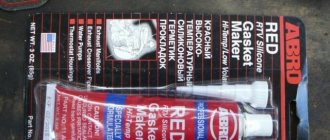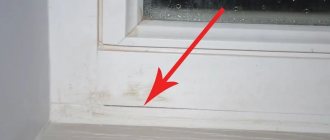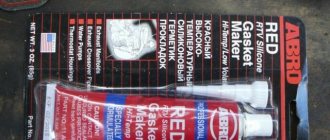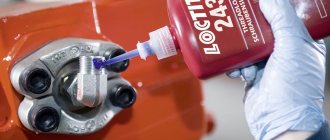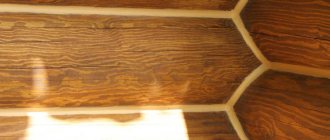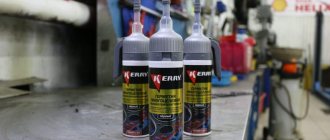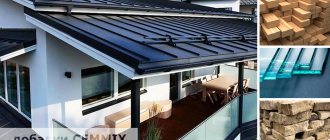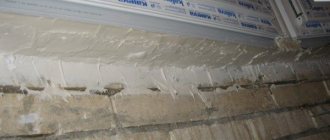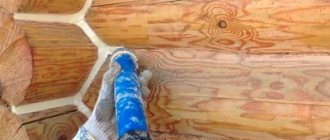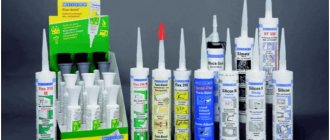Requirements for translucent structures of residential buildings
According to the above GOST R 56926-2016, design solutions for window and balcony blocks, assemblies adjacent to external wall openings must ensure water and air tightness of the building when exposed to precipitation and wind, as well as combinations of these loads.
Translucent structures must provide natural lighting of the premises at a standard level (in accordance with SP 52.13330 “Natural and artificial lighting”). Therefore, the total area of light openings should be at least one-eighth of the floor area of living rooms and kitchens.
TOP-best
The following brands deserve attention:
- Cosmofen - produced specifically for sealing joints. The composition of the mixture allows it to resist the formation of moisture, fungus, and external factors. One-component product, low viscosity. The sizing is instant, since it contains ethyl cyanoacrylate, there is no creation of flaws. Complete drying and hardening occurs after 15 hours. Heat resistance is guaranteed. It conducts heat poorly, so it does not release heated air from the room. Country of origin: Germany.
- Tytan is a sealant for PVC (liquid plastic) windows. Made on the basis of vinyl mastic. Designed for gluing and sealing cracks and joints on polyvinyl chloride. The use of this material ensures the strength of the formed seam, its water-thermal resistance, and is not susceptible to the influence of solar radiation or other street influences. Work should be carried out at temperatures from 15 to 25 degrees. The hardening time depends on the thickness of the applied seam, so with a thickness of 1 mm, complete hardening occurs within a day. Country of origin: Poland.
- Fenoplast is a white liquid plastic. Used for repairing window structures. The seams are strong and reliable. The first setting period is up to 4 minutes. Complete hardening occurs within a day. Country of origin: Germany.
- Enamel “Liquid plastic” DUFA Kunststoff flussig is used as a sealant for wooden windows and PVC. On two planes it forms a strong, durable, moisture- and chemical-resistant coating. It does not resist mechanical stress. There is no smell. One coat is enough to cover the base color. The composition does not spread when applied, as it has a viscous consistency. German quality.
- Greenteq – white hard plastic. It has a one-component composition. Fast polymerization, quality gives frost-heat resistance, impact resistance. Also unaffected by solar radiation. The production is based on diffusion adhesive, vinyl chloride polymer in a solvent. The first setting occurs in a minute at a temperature of 20 degrees and a humidity of 50 percent. Complete hardening, subject to the same conditions, will occur within a day. The minimum temperature at which work with trains is permissible is 5 degrees. To clean excess liquid plastic, cleaners of the same brand are used, and from metal objects it is enough to remove the frozen film, since setting with the metal does not occur.
Why do you need window sealant: installation solution
If we consider the design of a window or balcony glazing in a simplified way, it consists of the following main elements:
- an opening in the wall for installing a window or balcony block;
- window or door balcony block.
It is impossible to ensure that the linear dimensions of the blocks perfectly coincide with the linear dimensions of the opening. You also need to take into account that with temperature changes, the linear dimensions of the opening and the window block will change differently due to differences in the characteristics of the materials from which they are made, so a gap must be provided between them.
This gap breaks the tightness of the structure, becoming a “cold bridge”, an area through which precipitation and drafts will penetrate into the room. The result will be a decrease in room temperature (and high heating costs), humidity, and mold in the corners of the windows.
Signs of the need to seal plastic windows
Installing plastic windows has many nuances. Violation or omission of PVC installation rules can cause deterioration in the quality of sealing. Almost always, installation of plastic windows and their repair are carried out in the warm season. It is almost impossible to detect blowing in the summer, but with the onset of cold weather the first signs of the need for sealing may appear:
- condensation appeared on the windows;
- cold air blows from the gaps;
- Water accumulates on the windowsill;
- there was mold in the corner;
- the air temperature in the room has decreased.
Rice. 8. External sealing
Plastic windows provide additional insulation and maximum protection from the external environment, so the presence of blowing or condensation, with properly installed double-glazed windows, is excluded. They should not allow water or cold air to pass through. The seam should be tight. In any case, if there is a violation of the protective properties and sealing of the window, sealing and the use of sealant are necessary.
Places for applying sealants on translucent structures. Window sealant requirements
The following areas require sealing:
- gaps between the window block and the window opening;
- gaps between the frame and slopes;
- gaps between slopes;
- cracks in window frames;
- window sill connection;
- from the outside - the junction of the cornice to the wall.
Thus, sealing is required both indoors and outdoors.
These areas must be filled with material that meets the following requirements:
- high adhesion to the materials from which window blocks are made and to the wall material;
- thixotropy (so that it does not flow when applied along the upper horizontal and ceiling surface of the seam connecting the window and opening structures);
- elasticity;
- resistance to various adverse environmental factors (precipitation, aggressive chemical compounds, solar radiation, high and low temperatures and sudden temperature changes, vibration);
- antiseptic properties;
- aesthetic qualities (white, transparent or another color that matches the color of the frame or the possibility of painting);
- durability while maintaining all characteristics.
Sealing of windows is carried out both during the installation of window blocks and during repairs, when the old seal or sealant has ceased to perform its functions. The need for repairs can be determined by the following signs:
- draft;
- condensation on glass;
- water on the windowsill;
- mold on slopes.
Window mounting seam: according to GOST or not
Today, when glazing houses, most construction companies require the installation of windows in accordance with GOST. When installing windows, private consumers do not always think about the importance of a high-quality installation seam and are not ready to overpay for it. Why is a high-quality and protected installation seam in a window so important and what materials can it be used to make it?
Photo: 3 protective layers of window assembly seam according to GOST
A regular window installation seam differs from a GOST installation seam in the number of protective layers. In a regular seam there is only 1 thermal insulating layer of polyurethane foam.
According to GOST, the installation seam must have 3 protective layers:
- external vapor-permeable and waterproofing to remove excess moisture to the outside and protect the seam from the sun, rain and wind, which is done using mounting tapes or sealants;
- medium – thermal insulation using polyurethane foam;
- internal - vapor barrier (vapour-tight), protects the seam from the penetration of steam from the room into the seam, using tapes or sealants.
What materials are windows made from?
If the translucent filling of a window or balcony block is usually made of glass, the profile material may be different:
- PVC;
- metal with or without thermal bridge;
- tree.
PVC is most often used for windows. Balcony blocks can be plastic or metal. Wooden windows are now available in two versions:
- expensive wooden double-glazed windows;
- simple wooden frames (found in old houses, and can also be used in country houses and outbuildings as an inexpensive window option).
Thus, the sealant for window seams must have adhesion to glass, plastic, wood, metal, as well as to the materials from which the walls of buildings are made - concrete, brick, stone.
Multifunctional Cosmofen
Among the variety of polymer sealants, this adhesive has the greatest advantages. Cosmofen is distinguished by the instant connection of two surfaces. The product does not react at all to fungi and mold, and is also resistant to corrosion. Even after years of use, the seam does not change its color.
The most popular today is Cosmofen 345. It is actively used for sealing seams on window profiles made of rigid polyvinyl chloride. The glue is resistant to aging and precipitation, as well as the negative effects of ultraviolet radiation. Even after 15 years, the surface of the seam does not crack.
If materials are glued or glued, for example, a foam plinth at the junction of the ceiling and wall, then Cosmofen is applied to one of the elements, after which the component parts are pressed for 3-5 minutes. Products can be subjected to load after welding after 16-20 hours.
The final applications of liquid plastic are impressive in their diversity. Using this product you can seal seams, as well as gaps between the parts of the window structure. If you take into account the basic recommendations and rules of use, you can end up with perfect gluing of structures made of different materials. Using ZhP to seal cracks and seal PVC window joints with slopes, you can get a monolithic structure that has one color shade.
Choosing a sealant for sealing window seams
Sealant is a material for filling, sealing and sealing seams, abutments and joints. It can take the form of self-adhesive tapes, sheets, and is also available in the form of polymer-based pastes or so-called liquid plastic.
Paste-like polymers can be single-component or consisting of several components. While the former are ready for use, the latter are mixed from separate components, which complicates the work.
Sealants are also classified according to the type of active substance. Depending on it, the sealant has certain characteristics, therefore, for each type of material and work, its own type of sealing material is used. Of course, the more versatile the sealant, the better.
Important!
Sealant on windows is used not only inside, but also outside. Therefore, you need to use different sealants for different types of seams or choose a universal sealant that is suitable for both external and internal work.
What sealants are not used for plastic and other types of windows
Let us first list the types of sealants that are not the best choice for windows made of PVC and other materials.
Bitumen sealants
Although today there are already non-black bitumen sealants that are resistant to high temperatures, in general they are not used for windows.
Acrylic sealants
The downside to acrylic sealant is its tendency to darken or yellow over time. When used for external seams, its low resistance to moisture becomes critical. Even waterproof and frost-resistant types of acrylic sealants begin to deteriorate when constantly exposed to high humidity.
However, acrylic window sealants are still used on external seams, but with subsequent treatment with a fungicidal compound.
What sealant to use to seal the seams of window blocks
Let's look at the sealants that are most often used for plastic, wooden and metal windows.
Thiokol sealants
Thiokol or polysulfide sealants are high-quality materials that penetrate even the smallest cracks and cracks, filling them reliably.
The advantages of thiokol sealants include:
- strength and durability;
- resistance in a wide temperature range from –55°С to +130°С;
- chemical inertness;
- water resistance;
- resistance to organic solvents;
- excellent adhesion;
- Possibility of use at low temperatures.
Thiokol sealants are used in hydraulic engineering construction and are even more suitable for windows.
The disadvantages include the need to mix sealant from 2-3 components.
Butyl rubber sealants
One-component butyl rubber sealants have good adhesion and can be applied to wet and oily surfaces. The advantages of these sealants also include:
- strength;
- stability in the temperature range from –50°С to +90°С;
- elasticity;
- water insolubility.
However, these sealants are applied only at positive temperatures. In window blocks they are used mainly for sealing seams and cracks in double-glazed windows, and for processing the joints of the frame and slopes it is better to choose a different type of sealant.
Silicone sealants
Silicone sealants in everyday life are also referred to as “plumbing” sealants, because, due to their high adhesion, elasticity, strength and water resistance, they are popular for sealing joints in bathrooms.
Silicone sealants are available in a wide range of colors, as well as in a transparent version. They are also suitable for narrow joints up to 5 mm wide.
Silicone sealants are also used for windows, but there are some limitations to their use:
- acidic varieties of silicone sealants are not suitable for window blocks with a metal profile, as they cause corrosion of the metal;
- Silicone sealants are not suitable for windows with wooden profiles because, unlike wood, they do not work well under compression (bubbles may appear);
- on external seams, silicone sealant lasts no more than 5–7 years;
- For plastic windows, silicone sealant is suitable, but the seams filled with silicone quickly become covered with dust, which is difficult to clean because it sticks to the sealant, and the appearance of the window becomes sloppy.
Siliconized sealants
These are inexpensive, durable, vapor-permeable sealants (a mixture of acrylic and silicone components), but they are not used for metal work.
Alkyd sealants
One-component sealants based on alkyd resins are available in several versions.
These are inexpensive sealants that are suitable for exterior and interior use and can be painted. With high water resistance, they retain vapor permeability, have good adhesion to wood, brick and PVC profiles, and allow work at low temperatures.
Polyurethane sealants
The most important advantage of polyurethane sealants has always been their durability.
New generations of polyurethane sealants can be considered as truly universal materials, suitable for external and internal use and compatible with any building materials.
Areas of application
Modern manufacturers have come up with many different products for processing and insulating windows. ZhP is able to cope with the cracks that form during the installation of slopes. Installing such elements allows you to cope with several construction defects:
- It is the slopes that allow you to transform the window structure, due to which it will acquire an improved and harmonious appearance.
- During dismantling of old panels, deformation of the opening may occur. It can be easily removed using slopes.
- The level of lighting in the room is significantly improved. The desired effect is achieved due to the fact that the opening is equipped with an additional reflective surface.
- High-quality slopes allow you to increase the level of thermal insulation, due to which you can ensure the most favorable microclimate in the room.
- The penetration of dust and extraneous noise is prevented.
All these factors influence the fact that a window structure cannot do without installing plastic slopes of suitable size. But in order for such products to fully cope with the obligations assigned to them, their connection with the main fabric must be as strong as possible. To solve this problem, the ZhP was developed. The craftsman must carefully close the technological seams, as well as fix some auxiliary elements (plates, drains, protective strips). This is precisely what explains the need to use universal sealants.
Adhesive sealant for seams white
CEMMIX Adhesive-sealant for seams is a one-component polyurethane sealant for sealing various seams, junctions of steps and walls, entry of pipes and ventilation systems and rigid-elastic gluing of various materials.
More details
Adviсe
For better adhesion of the sealant to the surface, any remaining adhesive, dust and protective film should be removed from the PVC window frame.
The thiokol type of composition must be brought to the desired state before use by mixing the two components. The mixture is most often used by professional installers.
Silicone sealants should be applied very carefully, because after hardening, an uneven seam is easily damaged.
It is obvious that different types of sealing materials should be chosen for interior and exterior work. It is important to use vapor-permeable material on the outside of the building. On the inside, it is advisable to use plastic sealants, such as silicone.
Sealing the seams of plastic windows (2 videos)
Types and use of window sealants (22 photos)
White facade adhesive sealant
CEMMIX Facade adhesive-sealant is a special sealant based on hybrid polymers for various joints.
More details
Let's consider one-component sealants based on hybrid MS polymers - weather-resistant Cemmix Facade Sealant and Cemmix Seam Adhesive Sealant:
- sealants are designed for sealing seams up to 20 mm wide, as well as for rigid-elastic gluing of different types of materials;
- have excellent adhesion to a wide range of building materials;
- easy to apply (applied with a spatula or a construction gun, does not bubble, does not spread, and is thixotropic);
- quickly cure when exposed to atmospheric humidity (initial polymerization within 15 minutes);
- allow application at sub-zero temperatures;
- elastic;
- are not afraid of sunlight, high and low temperatures and temperature changes, vibration;
- frost-resistant;
- waterproof and chemically inert;
- mechanically strong;
- allow coloring;
- have antibacterial characteristics;
- safe for humans;
- serve for 10–25 years with preservation of properties.
Important!
Cemmix adhesive-sealant for seams is available in 4 shades, Cemmix facade sealant - in 8.
Cosmofen: instructions for use
Clean the surface to be glued from dust, degrease and wait until it dries. The glue must be applied to only one surface of the bottle using a dispenser located directly on the lid. Combine both parts of the product and hold for some time, pressing them against each other until the surfaces stick together. This is approximately 15-20 seconds. Final hardening depends on ambient temperature and humidity.
COSMOFEN CA 12 adhesive has a low viscosity, so it cannot be used with a gap of more than 0.1 mm between the surfaces to be bonded. For larger gaps, COSMOPLAST 516 and COSMOPLAST 564 can be used. In order to speed up the hardening time, the catalyst COSMOPLAST 583 is used. Careful preparation must be carried out before gluing. Namely:
- aluminum parts are treated with a special chemical composition or varnished;
- silicone and plastic surfaces must be tested first, since the range of materials is quite wide, and it can be difficult to immediately select the gluing mode and speed.
Glue consumption varies and depends on the material. The viability of the glue and the holding time of parts under pressure vary. They can be determined experimentally, since all these processes are influenced by the structure of the material, the volume of the surface to be bonded, as well as air temperature and humidity, the thickness of the applied layer, compressive force and other criteria.
Uncured COSMOFEN CA 12 can be cleaned using COSMOPLAST 597. Cleaning with acetone or removing the hardened film mechanically is possible.
When working, precautions must be taken. The basis of COSMOFEN CA 12 adhesive is cyanoacrylate - ethyl cyanoacrylic acid
This is a toxic substance that also has a high bonding rate.
When it comes into contact with the skin, it immediately sticks together, and the eyelids can also instantly stick together. This happens within a few seconds. Avoid direct contact with the glue. Inhaling vapors sometimes causes nausea and even dizziness. If COSMOFEN CA 12 adhesive gets on your skin, immediately wash off the cyanoacrylic composition with soap and water. If it gets into your eyes, under no circumstances should you close them; you need to wash off the glue under running water, the rinsing duration is several minutes. After the procedure, you should immediately consult a doctor. If glue vapors are inhaled, it is necessary to ventilate the room. Access to fresh air will prevent poisoning.
It should be stored in places where small children have no access. The glue has a shelf life of six months, provided that the contents are kept in a container from the manufacturer in places that exclude humidity. The temperature should be in the range from +15°C to +25°. Exposure to direct sunlight is destructive and leads to drying out of the polymer. At lower storage temperatures, for example, in the refrigerator (about plus six degrees), the shelf life is extended to 12 months.
This is interesting: Contact glue “Moment Crystal” - instructions for working with the product, its composition and characteristics - we reveal the essence
Adhesive sealant for seams white
CEMMIX Adhesive-sealant for seams is a one-component polyurethane sealant for sealing various seams, junctions of steps and walls, entry of pipes and ventilation systems and rigid-elastic gluing of various materials.
More details
What to do if water is leaking from the crack?
A more global and radical solution to the problem is needed for water leaks during rain.
First you need to remove the outer slope. In most cases, the surface of the mounting foam underneath does not have insulation and has already turned into dust. In this case, the sequence of actions is as follows:
- all ancient polyurethane foam is removed;
- if necessary, additional supporting blocks are installed;
- a vapor barrier tape PSUL or PBA is installed in the resulting groove;
- the place under the frame is foamed with polyurethane foam;
- the sealing layer is sealed with insulating tape;
- low tide is set.
If the ebb is attached with screws to the outer surface of the frame, then additional sealing is recommended. Before installation, silicone is applied to the contact surfaces.
It must be emphasized that the approach to window repair should be optimal. Before starting work, you should realistically assess the scale of the work and your strengths.
It may well be that calling in the services of experts could be cheaper than an unsophisticated and very large-scale repair.
Also watch the video below for useful tips on how to remove a gap in a plastic window with your own hands.
I have the same thing in a rented apartment, but the gaps are quite huge and there are leaks. Is it possible to contact window installers and get repairs at a low cost if the windows were installed in 2014?
This is absolutely the installer’s fault; most likely, during installation they were careless in installing the window sill. In the end, there was such a defect in the work. You can naturally use silicone or PVC glue, but this will not fundamentally solve the problem. You need to remove the low tide and remove all the dirt (dust), then foam this place, return the low tide to its place and also foam under the low tide.
We have a similar problem in our apartment. In winter and spring, puddles always appear on the windowsills and mold or mildew appears. It's scary that this problem keeps popping up. It is necessary to test these methods, and what can help us!?
After reading this delightful article, did you find out how to seal the gap between the window and the sill?
I will definitely recommend reading it to my friends and acquaintances.
White facade adhesive sealant
CEMMIX Facade adhesive-sealant is a special sealant based on hybrid polymers for various joints.
More details
Important!
For polyurethane sealants on joints requiring elasticity, the third contact surface must be eliminated. To do this, a cord made of foamed polyethylene is installed at the mouth of the seam.
Watch the video : Plastic windows. Quick sealing of joints and seams
The choice of materials for sealing windows and balconies is very wide, but each sealant has its own characteristics. Cemmix facade sealant and Cemmix adhesive-sealant for seams are universal materials that can be used when installing window units. You can buy Cemmix sealants wholesale and retail in construction networks, as well as online.
You can buy CEMMIX products without leaving your home, with discounts from 5 to 33%!!!!
Buy on Ozon
Buy on Yandex.Market
Buy on Wildberries
Buy at Leroy Merlin
Or you can find the nearest official dealer in your region on our map
← Sealant for blind areas
Waterproof and frost-resistant metal sealant for exterior use →
Return to list
Comments
Precautionary measures
Since Cosmofen glue contains cyanoacrylate, which is not entirely safe for humans when exposed directly to the body, you should follow some rules so as not to harm yourself.
1. All work must be carried out with gloves so that the glue does not get on the skin, otherwise this can lead to instant gluing of hands to things or to each other.
2. To avoid inhaling glue vapors, you must wear protective equipment: a face mask or a respirator.
3. The room must be well ventilated.
4. For people with allergies, it is better to leave this work to someone else to avoid undesirable consequences of exposure to Cosmofen.
5. Sealants are quite flammable. Using open fire near glue or smoking indoors is strictly prohibited.
News
We are always ready to help
Cemmix has opened a free hotline
to help you with any questions related to construction using concrete additives. Call and ask, our consultants are always ready to help!
Hyperplasticizer
Hyperplasticizers are a new type of plasticizing additives for concrete, ensuring the mobility of the mixture above P5. In addition to plasticity, they increase the water resistance and frost resistance of concrete by 2-3 times.
Manufacturers
When purchasing, you should focus on well-known brands. Popular manufacturers care about their reputation and monitor the quality of their products. Well-known brands include:
- Henkel-Moment.
- Silicone Rubber Sealant.
- SILIRUB.
- Akfix.
- Ceresit.
- Budmonster.
- MACROFLEX.
- Steez A, Steez V.
Only the use of high-quality products with a proven shelf life will guarantee the durability of the PVC structure.
Repairing cracks between frame and slope
Plastic windows have practically replaced their wooden counterparts from domestic use. This popularity has led to the emergence of many different intermediary companies that sell and install windows.
Related article: Is it possible to place a bed with the head of the bed facing the window?
Some of them are more expensive, some are cheaper, but often as the price drops, the quality of the work done also drops, which entails many problems in the future - the appearance of cracks, broken fittings, drafts and lack of sound insulation. If it was not possible to avoid poor-quality installation, then it needs to be eliminated.
What are slopes and why are they needed?
Slopes are the sides of the window opening to which the window frame is attached. The width of the slopes is determined by the thickness of the outer wall of the room in which the window opening is made. That part of the opening that remains indoors is called internal slopes; on the street side, respectively, external slopes.
External and internal slopes perform the same functions - sealing the window structure and giving it an aesthetic appearance. The slopes provide a smooth transition from the window to the wall of the room.
Installation of window slopes is carried out after installation or during operation of the window. There are several types of slopes; their main difference is the material of manufacture. There are plastic, panel, plasterboard, cement and metal slopes.
Find out which plastic windows to install in a child’s room and what characteristics such windows should have here.

